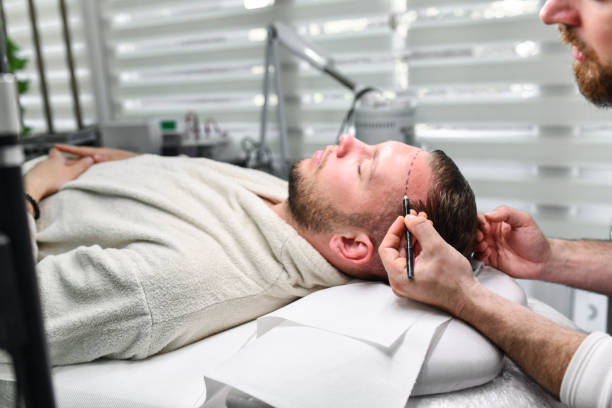Hair loss can be a distressing experience, impacting not only your appearance but also your confidence and self-esteem. For individuals experiencing pattern baldness, thinning hair, or receding hairlines, hair transplant procedures offer a long-lasting and natural-looking solution. In the UK, advancements in technology and surgical expertise have made hair transplants more accessible and effective than ever before. This article explores the key things you need to know about undergoing a hair transplant in the UK—from available procedures to what to expect before and after treatment.
Understanding the Growing Demand in the UK
Hair transplant procedures have seen a significant rise in demand across the UK in recent years. One of the leading reasons is the increasing awareness and availability of safe, minimally invasive options. Many clinics across the country offer advanced treatments, but it’s crucial to choose a reputable provider to ensure optimal outcomes. If you are considering a hair transplant UK, WMG London is one of the clinics recognized for providing tailored and professional care using modern techniques.
What Is a Hair Transplant?
A hair transplant is a cosmetic surgical procedure that involves moving hair follicles from one part of the body—usually the back or sides of the scalp, where hair is more resistant to balding—to areas where the hair is thinning or balding. The main aim is to restore a fuller and more natural-looking head of hair.
There are two primary types of hair transplant techniques used in the UK:
- Follicular Unit Extraction (FUE): In this method, individual hair follicles are extracted directly from the donor area and implanted into the thinning or balding areas. FUE is known for minimal scarring and quicker recovery.
- Follicular Unit Transplantation (FUT): This involves removing a strip of skin with hair follicles from the donor area, which is then dissected into individual grafts and transplanted. Though it may leave a linear scar, it can be more suitable for individuals requiring a larger number of grafts.
Are You a Good Candidate?
Not everyone is a suitable candidate for a hair transplant. The success of the procedure depends on several factors including:
- The extent of hair loss
- Availability of sufficient donor hair
- Age and general health condition
- Realistic expectations about the results
A thorough consultation with a qualified surgeon will help determine if you are eligible and what approach would best suit your hair type and pattern of loss.
The Procedure: What to Expect
Hair transplant procedures are generally carried out under local anesthesia, and patients can go home the same day. Here’s what a typical process includes:
- Consultation: An in-depth analysis of your scalp, medical history, and hair loss pattern.
- Preparation: Shaving and cleaning the donor and recipient areas.
- Extraction: Depending on the technique (FUE or FUT), grafts are harvested.
- Implantation: Grafts are carefully placed into the balding areas.
- Post-operative care: Instructions are provided to ensure proper healing and graft survival.
The procedure can take several hours depending on the number of grafts. Most people return to work within a few days.
Aftercare and Recovery
Post-surgery care is essential to achieve the best results. You may experience slight swelling, itching, or crusting in the transplanted area, which usually subsides within a week or two. Key aftercare tips include:
- Avoid touching or scratching the grafted area
- Sleep with your head elevated
- Refrain from heavy exercise for a few weeks
- Follow the clinic’s instructions on washing and moisturizing
New hair typically begins to grow within three to four months, with full results visible after 9 to 12 months.
Costs and Considerations
Hair transplant costs in the UK can vary depending on several factors:
- Technique used (FUE is generally more expensive than FUT)
- Number of grafts needed
- Surgeon’s expertise and clinic reputation
On average, you can expect to pay between £3,000 and £10,000 for a hair transplant procedure. Some clinics offer flexible payment plans or financing options to make the treatment more accessible.
Potential Risks and Complications
Though hair transplants are generally safe, there are some risks to consider:
- Infection
- Bleeding or scarring
- Unnatural-looking growth if poorly performed
- Graft failure
These risks can be significantly minimized by choosing a reputable and experienced clinic with a proven track record.
Conclusion
Hair transplant procedures in the UK offer a promising and permanent solution for those struggling with hair loss. With cutting-edge techniques, experienced surgeons, and personalized treatment plans, patients can expect natural and lasting results. If you’re considering restoring your hair and confidence, take the time to research, consult with professionals, and choose a trusted clinic for the best outcome.

